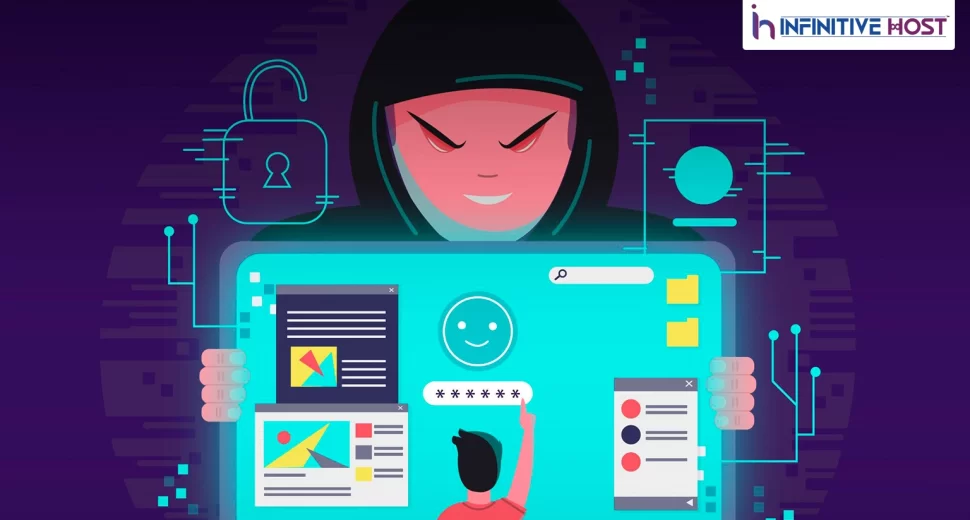In recent years, particularly in the post-pandemic era, cyberattacks have increased dramatically. Not only are large websites a target, but so are smaller, novice ones. One of the most significant methods for minimizing a cyber security risk is understanding how to recognize it, what it includes, and how to avoid it.
What is Ransomware?

Cybersecurity experts say ransomware is one of the most dangerous types of cybercrime that businesses face today. Files and documents on everything from a single PC to a whole network — including servers — can be encrypted using ransomware. This type of malicious software is known as malware.
One option for the victims is to pay the criminals who operated the ransomware attack in order to recover access to their encrypted network, or they may hope that a decryption key will be made available to the public for free. Alternatively, they might start from scratch again.
Some ransomware infestations begin with an employee of an organization clicking on an attachment that appears to be harmless. Still, it downloads the malicious payload and encrypts the network when opened.
Software flaws and vulnerabilities cracked passwords, and other weaknesses are used in bigger ransomware operations to obtain access to organizations, such as internet-facing servers or remote desktop logins, which are vulnerable spots. Before encrypting everything, the attackers will silently search the network for vulnerable points until they get complete control.
How does it work?

There are several ransomware versions, but it is essential to understand that they all operate in the same way: they all combine extortion with data encryption.
-
Screen-lockers, i.e., programs that block the display of your phone, computer, or another device, are the comparatively easiest type of ransomware to eradicate. Defeating ransomware that encrypts private files on your device (e.g., Cryptolocker) without paying a ransom might be considerably more difficult. Disk-encrypting software may encrypt a whole drive, preventing the operating system from loading.
-
Here, encryption is the objective. When you open an attachment containing ransomware code, the ransomware will automatically install itself on the server and alter the file extensions of all files.
-
There are several controversial extensions, including.crypt,.aaa, and.locky, among others. Variable differs from attack to attack. A unique encryption code is produced after the files have been updated. Each system has its unique code. Decrypting the data requires a corresponding key, and as you may have guessed, the hackers possess the decryption software.
How did ransomware evolve?
The early ransomware had a relatively simple design, employing just elementary encryption to alter the names of files, making it relatively easy to circumvent.
Nonetheless, it essentially spawned a new field of computer crime, which developed in scope gradually but exploded in the internet age. Prior to deploying complex cryptography to attack corporate networks, hackers targeted average Internet users with ransomware of the most fundamental variety.
One of the more popular types was ‘police ransomware,’ which attempted to extort money from victims by saying that law enforcement had encrypted their computers. It locked the screen and displayed a ransom letter warning that the user had engaged in illicit internet conduct, which may result in imprisonment. However, if the victim paid a fee, the “police” would overlook the violation and restore computer access by giving over the decryption key. Obviously, police enforcement had nothing to do with this; criminals abused innocent individuals.
While partly effective, these ransomware variants frequently only superimposed their ‘warning’ message on the user’s screen; restarting the laptop might eliminate the issue and restore access to files that were never actually encrypted. Today, the bulk of ransomware schemes employ complex cryptography to effectively lock down an infected computer and its contents, having learned from this technique.
How does it propagate?
Typically, ransomware infects a system via downloaded and accessed device files or Internet services that exploit the browser’s vulnerabilities. In the first scenario, dangerous files are typically distributed as attachments to unsolicited emails (spam). They are frequently disguised as vital documents such as bills, order confirmations, or other enticing material such as “private images” or intriguing movies. Additionally, ransomware can be linked to the illegal web material. In the second scenario, ransomware masquerades as sub-ads on prominent websites and exploits web browser and plug-in weaknesses.
What will the cost of a ransomware attack be?

The most obvious expense connected with a ransomware attack is the ransom demand, which can vary based on the type of ransomware and the size of your organization.
Cyber gangs are becoming increasingly usual to demand millions of dollars to regain network access following a ransomware attack. And the reason hacker gangs can demand such large sums of money is, simply put, because many businesses will pay.
This is especially true if a ransomware-locked network prevents an organization from conducting business; it might lose significant money for each day, or even each hour, that the network is unavailable. It can soon reach millions of dollars.
If a corporation chooses not to pay the ransom, it would not only lose income for a period that might last weeks or even months, but it will also have to spend a hefty fee for a security company to restore network access. In certain instances, this may cost more than the ransom demand, but at least the cash is going to a respectable company and not criminals.
Regardless of how an organization responds to a ransomware attack, it will have an economic effect in the future. It will need to invest in its security architecture to prevent falling victim again, even if that means tearing down the network and starting over.
In addition to all of this, there is the possibility that consumers would lose faith in the organisation due to inadequate cyber security, resulting in a loss of revenue. Cyber security and law enforcement prohibit ransom payment because it encourages cyber criminals to continue launching ransomware attacks. There have even been occasions when a victim paid a ransom, only for the same assailants to return and demand another ransom payment.
Why is ransomware so popular?
You might claim that the proliferation of ransomware is mostly due to the fact that it is effective. For ransomware to get access to your network, all required is for a single person to inadvertently open a malicious email attachment, for a weak password to be broken, or for enterprises to leave vulnerable software unpatched.
If organisations did not comply with ransom demands, criminals would abandon ransomware. However, companies must have access to their data to function; therefore, many are ready to pay a ransom to get the job done.
Meanwhile, it is a really simple way for crooks to generate money. Why spend time writing intricate programming or producing fraudulent credit cards using stolen bank information when ransomware may result in quick payouts of millions of dollars?
Cyber insurance is a policy meant to safeguard businesses against the consequences of cyber attacks. Nevertheless, some cyber-insurance plans cover the expense of paying the ransom, prompting cyber security experts to warn that cyber-insurance payouts covering the cost of paying ransoms exacerbate the problem, as cyber criminals know that if they strike, the proper target, they’ll be paid.









